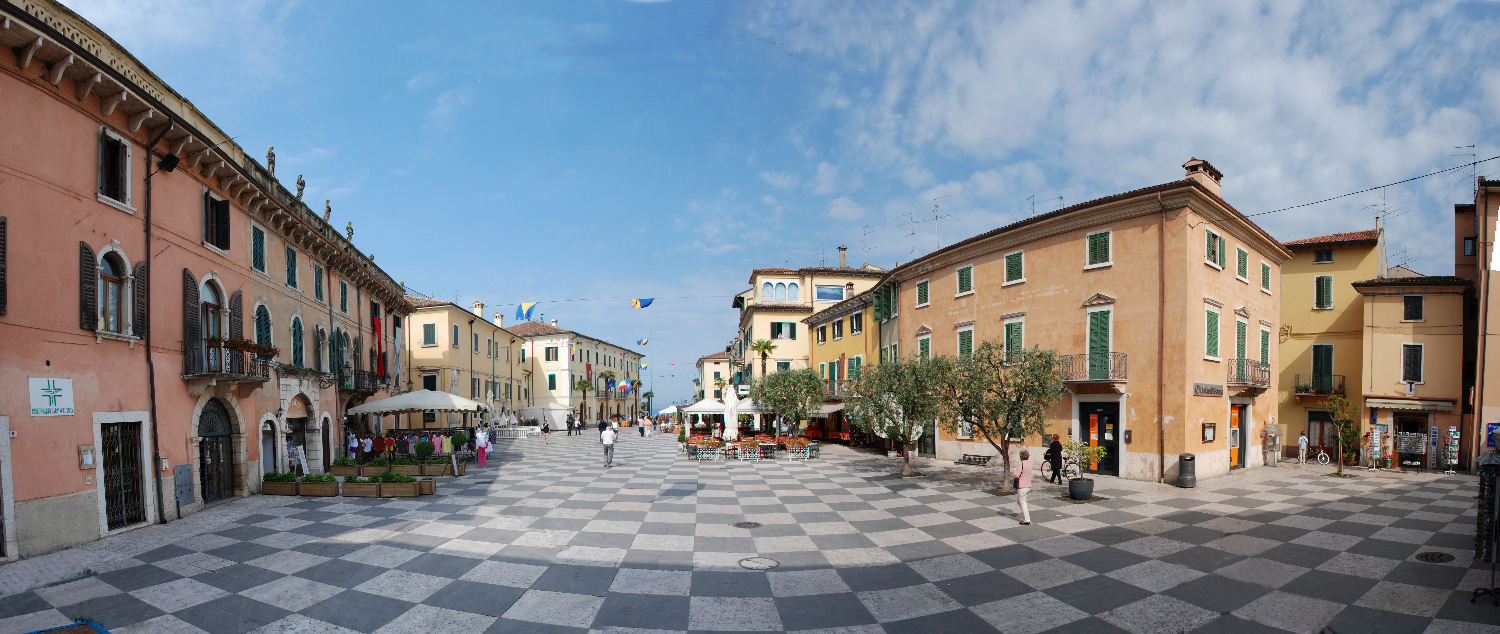Lazise – A Pearl on Lake Garda
Lazise is one of Italy’s most beautiful walled towns, surrounded by turreted walls. The historic centre is entirely within the walls, which together with the narrow streets, the harbour and the historic buildings, give the town a truly medieval atmosphere.
The main entrance of the walls is dedicated to San Zeno, one of the patron saints of Lazise, whose image we find in a mosaic on the left of the gate. In the 10th and 11th centuries, when the walls were built, the gate was equipped with a watchtower and a drawbridge.
Until the 17th century, Lazise was not surrounded by fields and olive groves, all of which were enclosed within the walls for greater protection, but by a veritable forest called Selva Lucana, which included the moraine hills to the east and south and the area that is now called Lugana.
To the left of Porta San Zeno there is a tower called Torre delle Ore, which in the Middle Ages was equipped with a clock and bells. Continuing along the walls we come to the castle, built on the remains of a Roman villa: the remains of the Roman military harbour can still be seen in the castle garden.
In 983, Emperor Otto II of Saxony granted concessions that saw the villa provided with five watchtowers, a central keep and fortified walls. This was to protect against the incursions of the Hungarians, who plundered the area every year. The castle is privately owned and part of it was restored at the beginning of the 20th century.
We go through the southern entrance of the walls, called Porta del Lion. Inside there is a bas-relief of the Lion of Saint Mark, symbol of the Venetian Doges, who received the “keys” of Lazise in 1405. Take the first lane on the left and follow the wall of the old vegetable garden to the entrance of the castle.
The castle
The mighty keep is always in sight: on its northern wall we can see a lesion caused by a “bombard” blow in the 15th century during the wars between Milan and Venice. Turning right, we find ourselves in the port. The Dogana building, with its crenellated walls, was originally an arsenal where Venetian galleys were kept and repaired. A watchtower, called the Cadenon Tower, closed the entrance to the port with a chain. The chain was raised in times of danger to prevent brigands and enemies from entering the port. The tower was demolished in the 1920s to make way for the War Memorial.
Along the northern quay of the port there were ‘verzieri’ or warehouses with arcades dating from the 14th century. Almost all goods were transported by sea, which was safer and faster than by land. The arcades were removed in the 1930s and the houses along the port were rebuilt.
Lakeside
The important villas on the lakeshore were protected by ramparts, surrounded by the waters of the lake. In fact, until the 20th century, Lazise did not have a lakeside promenade (built in the 1920s): villas and gardens opened directly onto the water. In the last street before the northern wall there is a very interesting building: the old “hospital”, a place where “foreigners” could rest and refresh themselves during their travels. It also served as a cellar and mescita.

The northern wall
Continuing, we come to the northern wall, of which we can admire the watchtower (inhabited) with its bastion and the lemon house. Inside the Porta Nuova (North) we can see a beautiful mosaic of San Martino with the Castle of Lazise in the background and a bas-relief of the Madonna. On the stone blocks that support the gate, there are two interesting inscriptions, probably from the 14th century.
Looking up, we can see the remains of the stone slabs that formed the “camminamento”, a walkway that allowed the soldiers to walk along the entire length of the walls inside. On the outside of the gate you can see the damage caused by a “bombard” in the 15th century. The last section of the walls borders the Le Mura car park: the section along the main road between the last watchtower, now in ruins, and Porta San Zeno is missing.

